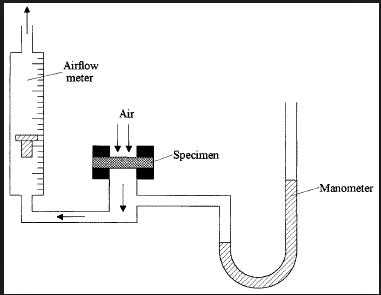Standard Test Method For Air Permeability of Textile

This ASTM D737 – Air Permeability of Textile Fabrics test method applies to most fabrics including woven fabrics, nonwoven fabrics, air bag fabrics, blankets, napped fabrics, knitted fabrics, layered fabrics, and pile fabrics. The fabrics can be untreated, heavily sized, coated, resin-treated or otherwise treated.
Air permeability is an important factor in the performance of such textile materials as gas filters, fabrics for air bags, clothing, mosquito netting, parachutes, sails, tentage, and vacuum cleaners. In filtration, for example, efficiency is directly related to air permeability. Air permeability also can be used to provide an indication of the breathability of weather-resistant and rainproof fabrics, or of coated fabrics in general, and to detect changes during the manufacturing process.

The rate of air flow passing perpendicularly through a known area of fabric is adjusted to obtain a prescribed air pressure differential between the two fabric surfaces. From this rate of air flow, the air permeability of the fabric is determined.
This test method is considered satisfactory for acceptance testing of commercial shipments since current estimates of between-laboratory precision are acceptable, and this test method is used extensively in the trade for acceptance testing.
2017-11-30 16:19

